THE PERFORMATIVE
EXPERIMENT
A Polylogue to Practice the Malleability of an Aesthetic and Spatial Sense of Self
ABSTRACT:
This thesis contends that basic architectural design training requires malleable aesthetic and spatial sensibilities which in turn can cultivate a pliable and multiple sense of self. “A sense of self” here draws on William James’s and Ulric Neisser’s plural ways of conceiving and knowing oneself through self-knowledge, self-consciousness and self-agency, all of which combine to motivate our actions in the world. “Aesthetic”, borrows from Mark Johnson’s definition of constituting the patterns, images, feelings, qualities, and emotions by which meaning is possible for us in every aspect of our lives. “Spatial” captures the ways in which we situate and orient self in the world. How we are trained to perceive, apprehend, cogitate, examine, reflect, record, and practice these sensibilities guides how we piece together our experiences in the world as a series of aesthetic and spatial fragments. I argue that 1. The cultivation of multiple and pliable attributes of self is prescient and relevant to fields beyond design. 2. The site of cultivation lies beyond the mind. I build a case that these two contentions are picking up on recent waves in situated, distributed, and embodied cognition and posthuman discourse, that have each reclaimed the body, physical, digital and virtual environments, and the non-human respectively as extended sites of perception and cognition. Posthumanism here, in the terms of physicist and feminist theorist Karen Barad, extends agency to the nonhuman by prefiguring neither human nor nonhuman in interactions.
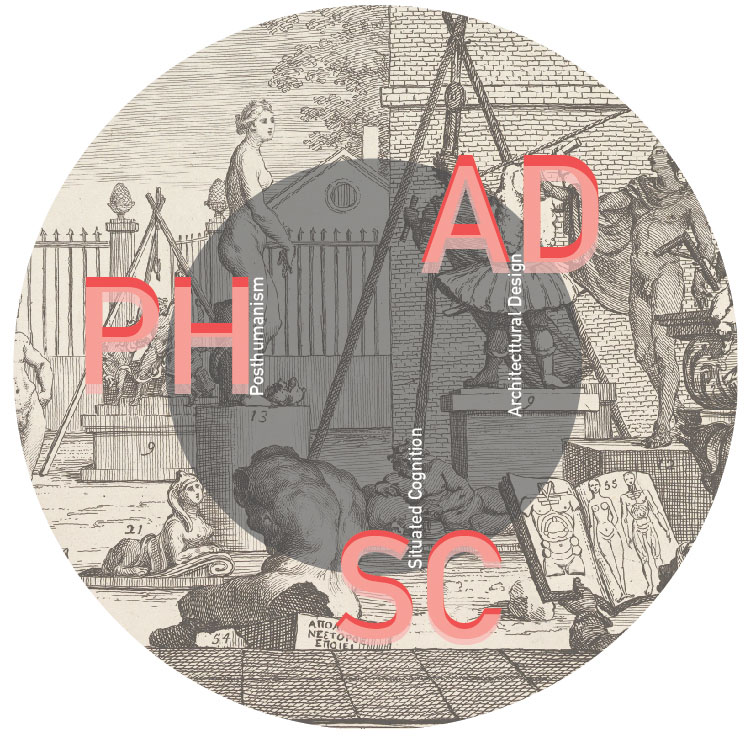
__________________________________________
//Below are some excerpts of the thesis, in no particular order.
EXPERIMENT #1
HOW DO WE MAKE MEANING OF VAGUE
SHAPES?
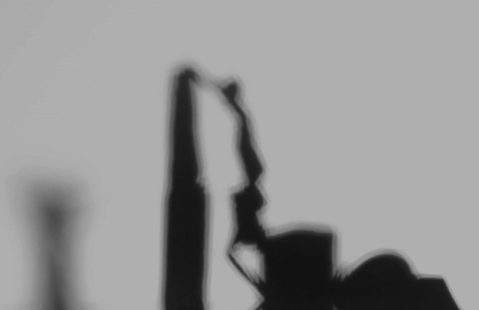 Sample image of shadow stimulus
Sample image of shadow stimulus
a. Overview
This experiment is motivated by the following questions : How do we graft interpretation and meaning-making onto stimulus and experience? How do we see shapes in things? Describing vague shapes is one way to tap into the drivers of imagination — our various internal states including our attitudes, beliefs, emotions, motives, to which we may not have direct access. Further, it tracks the role of tracing in the perception of vague shapes. Does tracing allow one to slow down the perception process to see differently, or to notice more details? It gives the subject and the experimenter methodologically controlled, “phenomenologically enlightened” ways of understanding the importance of first person experience and how this reported experience can affect the experimental results, and experimental design. This experiment employs the shadow and its ability to abstract away material, texture, depth, color, pattern, and tap into deep seated preconceptions and assumptions about meaning-making from vague stimuli.
This experiment is motivated by the following questions : How do we graft interpretation and meaning-making onto stimulus and experience? How do we see shapes in things? Describing vague shapes is one way to tap into the drivers of imagination — our various internal states including our attitudes, beliefs, emotions, motives, to which we may not have direct access. Further, it tracks the role of tracing in the perception of vague shapes. Does tracing allow one to slow down the perception process to see differently, or to notice more details? It gives the subject and the experimenter methodologically controlled, “phenomenologically enlightened” ways of understanding the importance of first person experience and how this reported experience can affect the experimental results, and experimental design. This experiment employs the shadow and its ability to abstract away material, texture, depth, color, pattern, and tap into deep seated preconceptions and assumptions about meaning-making from vague stimuli.
Both distributed cognition and posthumanism are engendering new aesthetic and spatial abilities that exemplify the multiplicity and malleability of self. In order to productively instrumentalize their common findings, we need new methodologies and materials that escape individual disciplinary silos which proliferate canons and inhibit the creation of common ground. Design pedagogy has the ability to address the motivations of various fields in order to develop such methodologies. I mediate cognitive science and posthuman discourse in order to make visible their pursuits, knit together their underlying values, and frame their common calls as design problems. Through this, I test out a methodology called Performative Experiment, that articulates the malleability of aesthetic and spatial sensibilities by estranging one from rote moves.
I propose the shadow and shaded silhouette as materials with which to engage these methodologies, in order to challenge the object-focused paradigms which have long structured design pedagogy, arguing instead for relational practices. In order to implement the case I’ve built, I present Hogarth’s Silhouettes as a proof of concept of a foundational experiment in design education. My claim is that it puts into play a malleability of aesthetic and spatial sense of self, which constitutes a revisited way of thinking/doing design, across disciplines.
Thesis Supervisor: Mark Goulthorpe (MIT)
Title: Associate Professor of Architecture Design
Readers: Terry Knight (MIT), Morana Alač (UC-San Diego)
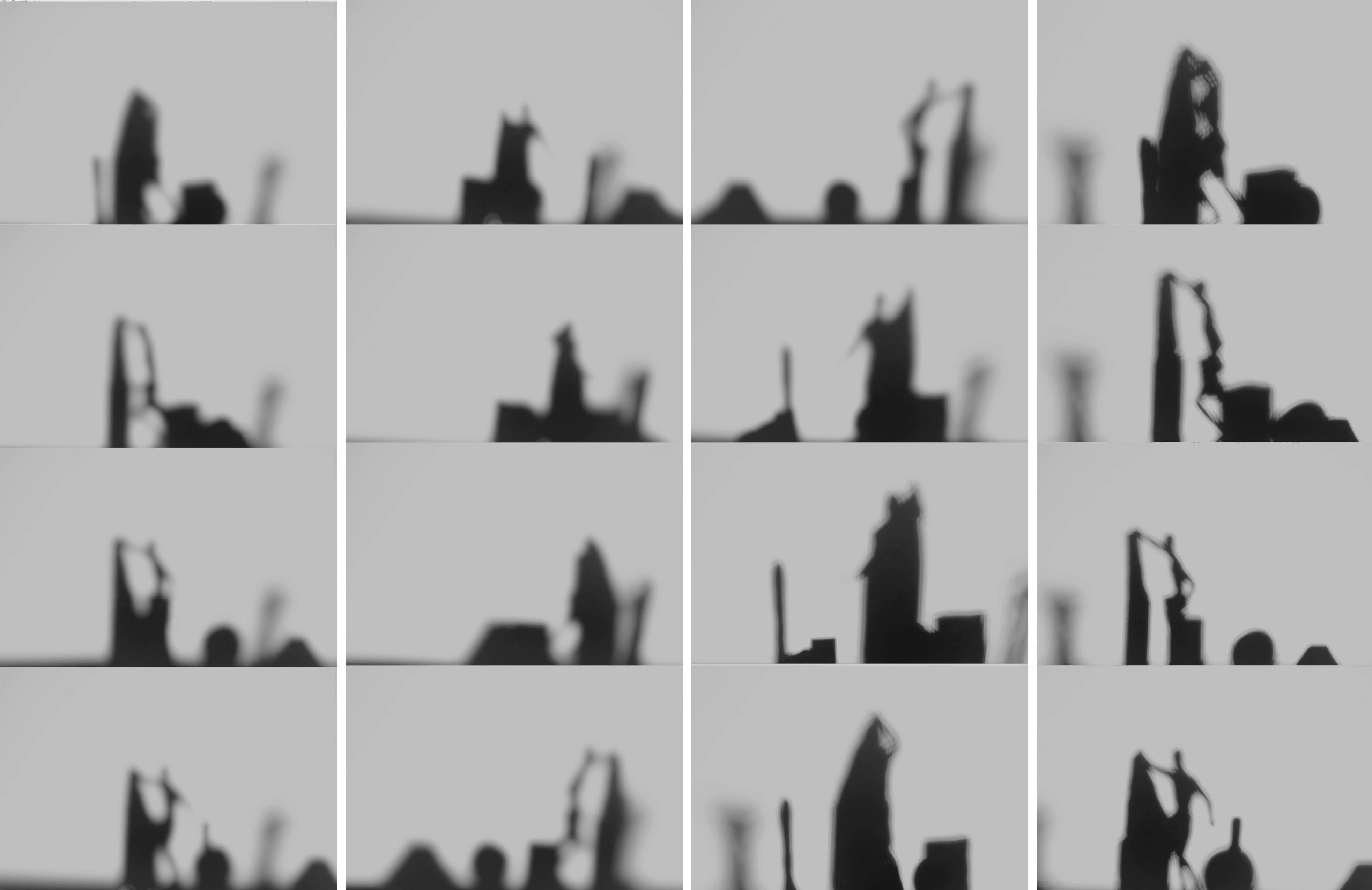
Various cognitive and neurocognitive studies have been conducted to show how we gain information about the world from 2D retinal images. We have the capacity to infer solidity and depth from the 2D retinal image, based on visual cues such as shading, perspective and occlusion. Additionally, as Richard Gregory has demonstrated, we carry in our minds “predictive hypotheses” of what we see in the world, that influences our perceptions. This top-down interaction of how we makes sense of visual stimulus clues us into aesthetic and spatial aspects of self. In this experiment, I employ shadows, which flatten depth, to ask questions of how we perceive and make meaning out of vagueness. Do we still infer depth in shadow? Can the infinite in-betweenness of the umbra, penumbra and antumbra, and the fusion of flattened shadows make us infer objects that are not there? Scenes that are not real? In asking these questions, the Performative Experiment not only acknowledges the role of the human as the agent who perceives, but also the shadow image as an agent that influences perception. This intra-acting relationship between non-human stimulus and human perceiver, that generates a joint perceptual capacity, is central to why this is a posthuman Performative Experiment.
“I see a llama speaking to a camel.
I see the Pope on a Pope mobile”
I see the Pope on a Pope mobile”

Participants in the meaning-making from vague shapes experiment
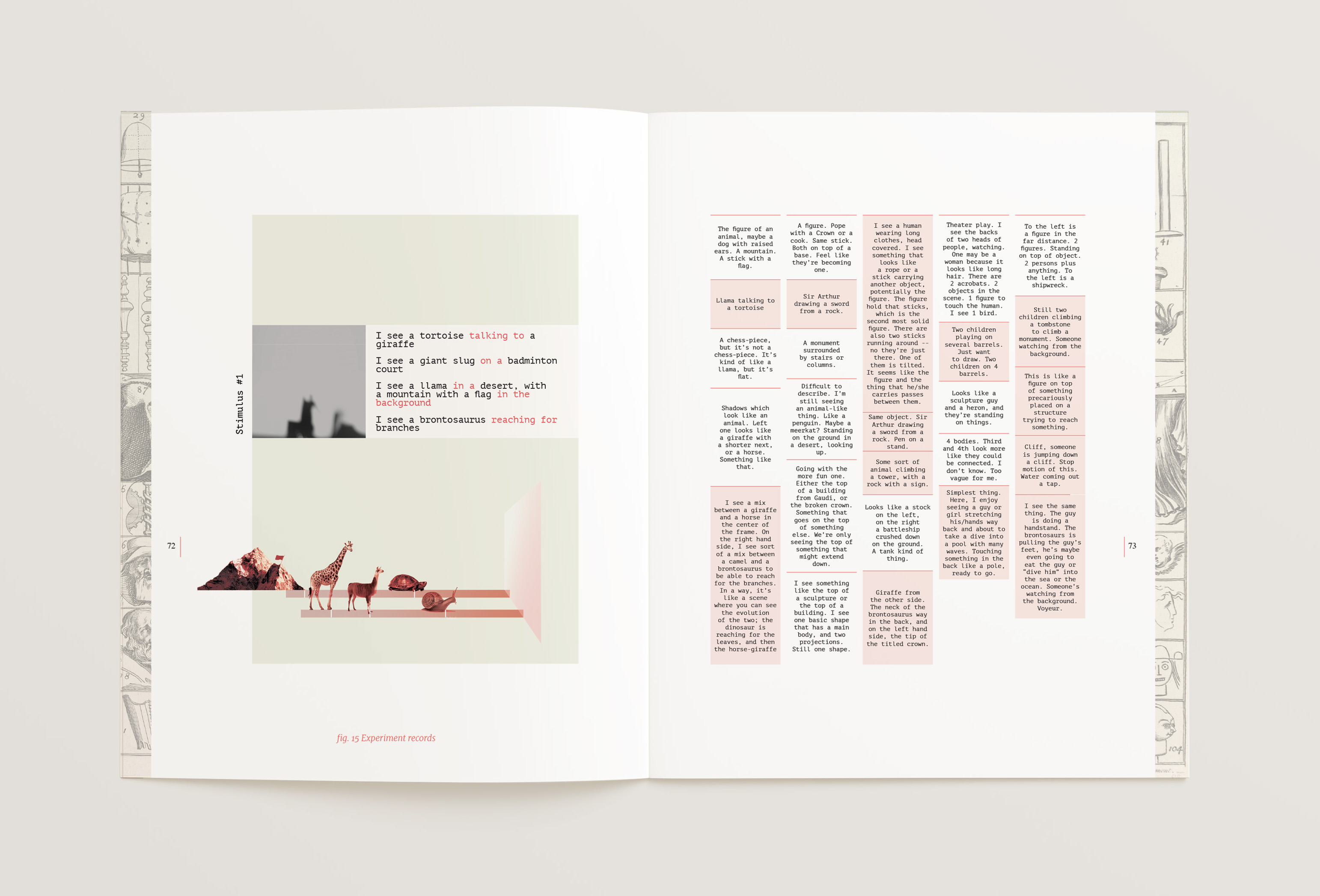
 Sample pages from book documenting thesis project
Sample pages from book documenting thesis projectEXPERIMENT #2
HOGARTH’S SILHOUETTES:
DESIGNING WITH RELATIONAL ENTITIES RATHER THAN WITH OBJECTS.
a. This intervention was developed as a result of an analysis of the object-obsessive ways of designing. Arguing that this mindset has been baked into the digital tools what we use and limits the ways in which we can discuss aesthetics and spatiality untethered from the object. By tending instead to silhouettes and shadows -- relational entities, I simulate what simulations might look like, and how it might challenge systemic presuppositions while designing in the digital realm.
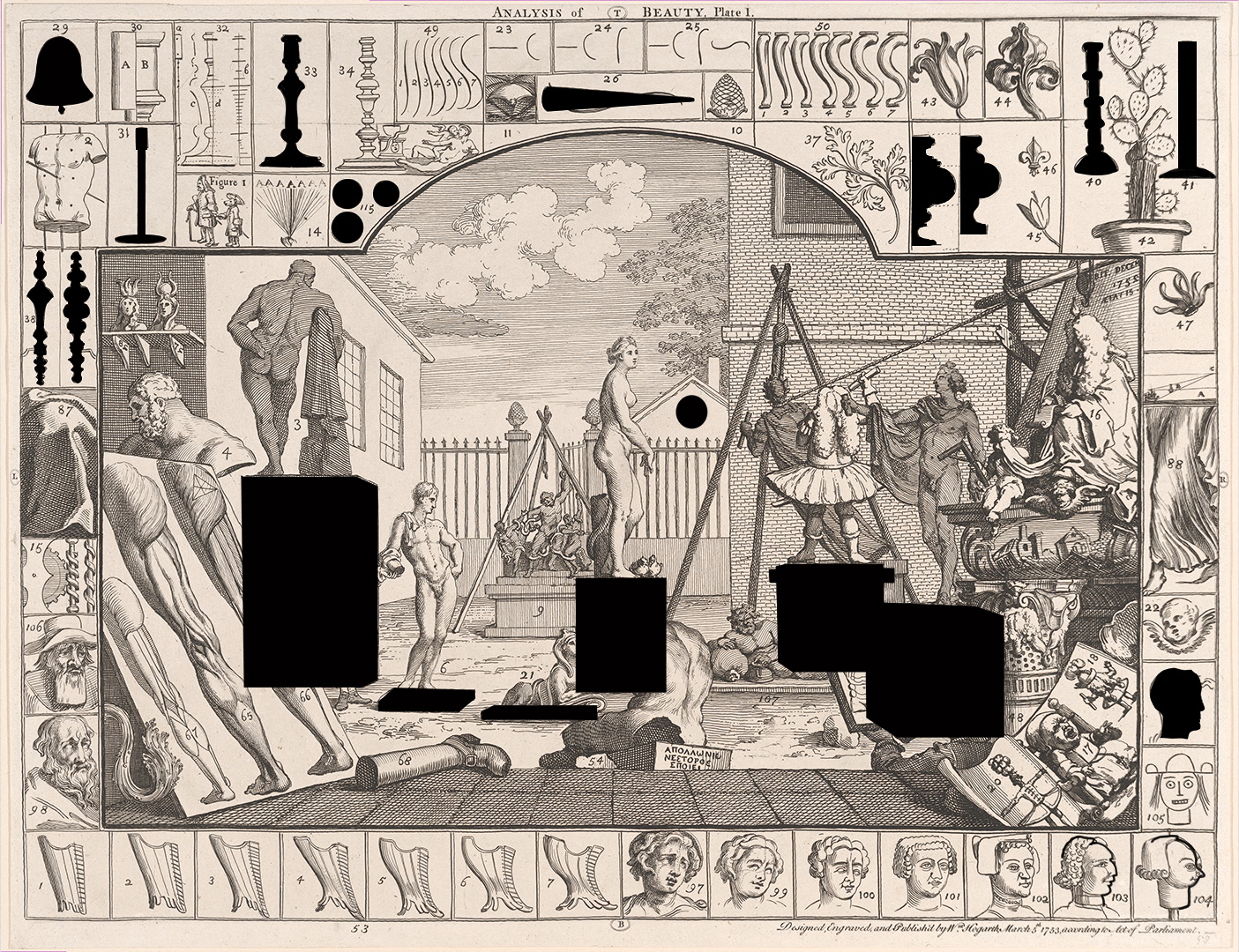 Isolating silhouettes from William Hogarth’s Analysis of Beauty. 1753.
Isolating silhouettes from William Hogarth’s Analysis of Beauty. 1753. Clip from animation. Percepts of Absence.
Clip from animation. Percepts of Absence. Akshita Sivakumar. 2016
 Sample reel from animation. Percepts of Absence. 2016
Sample reel from animation. Percepts of Absence. 2016